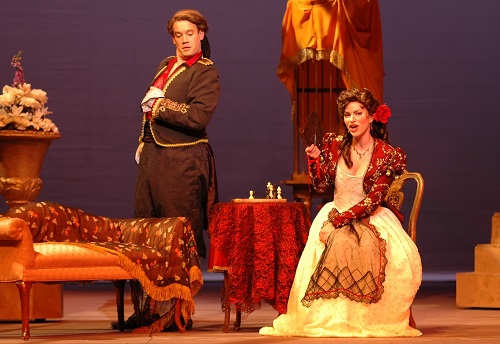
The biggest learning curve for me was VCAs (also known as Control Groups or DCAs, depending on what make of desk you use) and automation.
Modern musicals are all about mixing line by line – when someone isn’t speaking or singing, their mic is completely off. They typically use over 40 radio mics for the cast (including two for each principle performer), 30-plus band mics, then add in soundscape and backing tracks, sound effects, and the monitor mixes.
It becomes impossible to mute and unmute each track at the right moment, let alone ride the faders at channel level. This is where automation comes in, with the programming of the desk becoming vital to the effective mixing of the show.
The DCAs act as remote controls for the channel faders. Instead of the operator having to call up a specific channel in the layers of the digital desk each time they need to alter the level, that channel is remotely operated by one of the 8-12 DCA faders.
For any given scene in the show (with the desk “scenes” corresponding to changes in what the audience needs to hear, rather than scenes in the script), the operator needs to have the control of the mics that will be live in that scene routed to the DCAs. They then can pull each fader up and down as each performer, or group of performers, speaks or sings. When the scene changes, the DCAs will control a different set of channels, so while DCA 1, 2 & 3 controlled Chorus 1, Narrator and Steve in (desk) Scene 1, they might control Chorus 2, Susan and Steve in Scene 2.
On top of this automation is another level of automation involving EQs, reverb sends, other effects, whatever is specific to the show. And once you’ve programmed everything into the desk, you get to see whether it all works during the tech or in our case, using the multitrack recording of the live show.
The practice of recording live musicals onto multitrack is the reason courses like the Orbital course can teach people how to mix musicals. Many large productions now budget for a DAW system as standard, both for commercial show recordings and as a teaching resource for Sound No. 2s or touring sound ops learning how to mix a show. A No. 2 can load up any scene on the desk, find that scene on the multitrack recording, hit play on the multitrack and mix that scene as if it was live. They do not have to inconvenience any performers or musicians.
On day two of the course, we had the chance to mix scenes from the Dutch touring production of We Will Rock You, the most recent West End production of Evita and a semi-pro production of Rent, on three different desks, all without leaving the Orbital premises.
The course also covered radio mics, A/B systems, score reading and speaker zones in theatres (e.g., stalls left & right, circle left & right, center, fills and delays). Also, how to use the desk matrix to route different sources to zones at different times, which is a totally different way of looking at speaker placement compared to a modern rock gig.
Overall it was a challenging, enlightening and fun two days. I left with a much better understanding of what goes into designing and operating a large-scale musical, and the confidence to look at expanding my musical design and operating experience. Although I’ll probably start with panto, rather than the West End.
(Note for non-British readers, an explanation of pantomime theatre is here.) Yes, it’s a valid and thriving form of musical theatre in the UK. Don’t worry, I don’t quite get it either.
SoundGirls.Org supports women working in professional audio and music production by highlighting their success and providing a place for them to connect, network, and share advice and experiences, in addition to providing career development and tools to help those working in the field advance in their careers.


